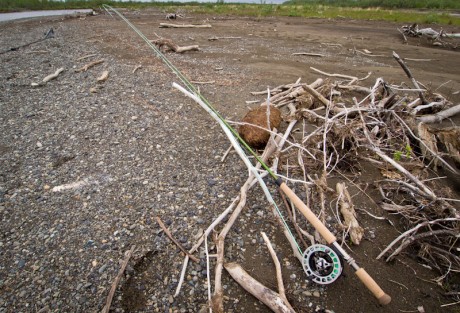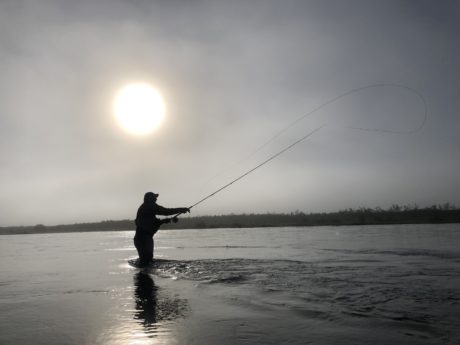
Switch rods have become a very popular stick to have in the weapons closet. Having the ability to single hand-cast, two hands overhead cast or Spey cast is a cool rod, right? Now the challenge, lining a switch rod. Many people buy a switch rod with the mindset of versatility, want to nymph and swing, and want only one line. While there really is no line on the market that works perfectly for everything you want to do, you can get one line that and make it do everything, but generally, it will excel one style of fishing and be frustrating the other way. If you want the best setup possible, you have a spare spool for your reel and have two setups. With all that, let us dive into some lines and what they are designed to do.

Single Hand Lines: When it comes to single hand lines, it is simple, if you have a favorite line for your style of fishing, buy it 2-to-3-line sizes heavier than the rod (Ex. 6wt switch, line with a WF8 or WF9) the reason for this is grains, longer length rod requires more grains to load, and single-hand lines are grained for shorter lengths. If you are looking at lines like the Rio Outbound shorts you would only need to go bump up one size as they are already bumped 2 full sizes by design.
Switch Lines: The Rio Switch Line has a 55’ head, making it an ideal nymphing line for short to mid distances. The thick diameter tip gives it the ability to turn over nymph rigs with indicators easily and will turn over a decent streamer. It has plenty of body and rear taper to allow a lot of stack mending. However, it is not a great sink tip line. But if add a set of versi/poly leaders will give you some tip workability. It is also a good overhead casting line when you have room for a backcast. When deciding on line size, they are all dual sized (6/7, 7/8, etc.). The first number is for Spey casting, and the second number is for overhead casting. In otherwords, if you have a 6wt switch and you plan to mostly overhead cast, you would grab a 5/6, and if you are looking to mostly Spey/roll cast more, you would pick the 6/7.
Chucker: The Rio Switch Chucker is exactly that, a chucker. This line is the closest line that will give you “dual-purpose” ability. Take the Rio Extreme indicator line and imagine it being beefed up in grains for a switch rod, that is basically what a Rio Chucker is. With a short front taper it allows for a quick turn over, so when you throw a nymph rig with a bobber and split shot, everything gets a little boost of acceleration. Additionally, the short front taper and the thicker front end allows for turning over sink tips as well. If you plan to cast a long leader nymph rig at a distance, consider putting a floating MOW tip on the front. The short front taper turns extremely quick and can create a traffic jam with your leader and bobber from the acceleration; the floating tip will extend that front taper and help smooth that out. Like the switch line, this line has a lot of rear taper so that stack mending will come at ease.
Short Scandi: Both Rio and Scientific Angler build a short Scandi line that is ideal for a switch rod when you want to Spey cast. The shorter heads make for casting switch rods in tighter situations easier. Scandis are great for swinging smaller flies and skating. This is great line for single and double Spey casts.
Short Skagit: Airflo, Rio, Scientific Angler & OPST all make a sub-20’ head ideal for switch rods. These lines are true sink tip and bigger bug lines when you need to cast big bugs in tight quarters. Short Skagit lines are not great for nymphing. Skagit head densities are designed to stick to the water to allow for a good preload sweep into your D-loop. This attribute makes them tough to mend at a distance and with no true rear tapper and a thin running line you lose a lot of mend control. It’s not that you can’t make it work, It’s just not ideal.
We hope this helps you find the ideal line pairing for your switch rod. Ideally, you should try a line on the water. A lot of local fly shops offer lines you can demo, so you can try before you buy. Try one, or two, or three and see what matches your type of fishing and casting.
Other Posts about Spey and Switch rod fishing:
Leave a Reply